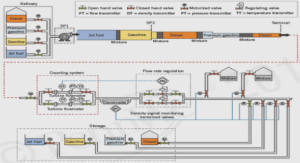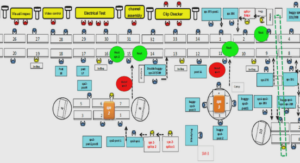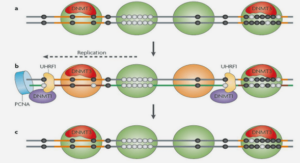Calibration and validation statistics of soil phosphorus properties, using NIRS and MIRS.
Simple regression statistics (Table 4) indicated a significant linear relationship between Prem and C, clay, silt, sand, Fe2O3_CBDcbd and Gb, whereas pHwater and Kt were not significantly related to Prem. Among the different soil properties, gibbsite content was the most closely and significantly correlated with Prem (r = -0.59). The amount of crystallized oxides was also significantly correlated with Prem (r = -0.49), however, the relationship with gibbsite was better than with iron oxides. Strong relationships between Prem and the clay (r = -0. 53) and sand (r = 0.51) contents were observed, with a negative coefficient for the former and a positive one for the latter. The clay fraction was highly correlated to gibbsite and iron oxide contents (r = 0.35 and 0.54, respectively) which also had significant negative correlations with Prem. The sand fraction behaved opposite to the clay fraction. The C content was negatively correlated with Prem, which was a surprising result, because organic matter is supposed to reduce phosphorus retention (Haynes and Mokolobate, 2001), and thus increase Prem. Soil minerals (kaolinite, gibbsite, iron oxides) play a key role in the stabilization of organic matter (Kaiser and Guggenberger, 2003) and thus explain the significant correlation between C and Gb (r = 0.24). The chemical reaction of the soil (pHwater) does not seem to contribute much to the sorption of P, in line with the review paper of Gérard (2016), explaining that the binding capacity of Fe/Al oxides varies moderately in the pH range of Madagascar soils. Regression between Pres and soil properties showed that pHwater, silt and sand contents were the only significant variables (Table 4).
The multiple regression analyses developed are presented in Table 5, and illustrated graphically in Figure 4 for Prem. For chemically analyzed variables, the strongest multiple regression (P<0.0001) for Prem included five factors (each significant at α = 0.05), representing pHwater, texture and mineralogy variables (Eq. 1; Figure 4a). As expected, given their P sorption capacity, Fe/Al oxides (i.e. Gb and Fe2O3_CBD) had a major effect on Prem. The sand content (i.e. quartz), known for not having significant sorption capacity for P, counteracted the effects of Fe/Al oxides and was useful for the accurate prediction of Prem. The pHwater, which was not correlated with Prem (Table 4), was removed without a substantial reduction of the model efficiency (Eq 2). The C content had significant contributions (Eq 1), however, its inclusion in the model improved only the explanation of variability marginally (Eq 3, Figure 4b), presumably, because of collinearity of C with Al oxides (r = 0.24). The root-mean-square error (RMSE) was between 6.5 and 6.9 mg L-1, depending on the models. A multiple regression equation was also obtained for Presin (R2 = 0.42, Eq. 4) using the same five factors than for Prem, but the efficiency of the model was greatly reduced after removing pHwater and C content (R2 = 0.05, Eq. 5). The goodness of fit of multiple regressions was lower for Presin than for Prem (Table 5).
We tested the same multiple regression analyses using the variables predicted with the PLS methods (carbon, Fe2O3_CBD, sand) and with the use of the intensity of the derivative of specific peaks (kaolinite, gibbsite). For pHwater we used measured values as it could not be predicted with spectral methods. For Prem, the multiple regression equations were approximately of the same quality than those obtained with only the measured variables (Eq 7 to 8 in Table 5; Figure 4c). Moreover, the relationship between Prem predicted with PTF using chemically measured data (Eq 3) and Prem predicted with PTF using spectrally predicted data Figure 4. Relationships between the measured data and the predicted using the best-fit pedotransfert function (Eq 1, a), a simplified function without C and pH (Eq 3, b), a simplified function without C and pH (Eq 8, c).
Phosphorus is an essential nutrient required by crops in large amounts. Soil testing is one of the most cost-effective nutrient management tools available to farmers and crop advisers. Soil tests provide an index of the labile plant-available P by extracting a fraction of the P that is related to the yield response of crops (Fixen and Grove 1990). Soriano-Disla et al. (2014) have recently reviewed the performance of visible, near-, and mid-infrared reflectance spectroscopy for the prediction of soil physical, chemical, and biological properties using multivariate chemometric regression modeling. For P availability indices, with few exceptions of soil sets representing special or unusual conditions, most v values (0.5–0.7) or were considered to be completely unreliable (R2 < 0.50). At regional or country scales, most of the results are unreliable with both NIRS (Chang et al., 2001; Vendrame et al., 2012) and MIRS (Shepherd and Walsh, 2002; Minasny et al., 2009; Forrester et al., 2015). An exception was reported by Morón and Cozzolino (2007) who found low accuracy prediction, using NIRS, for resin and Bray extractable P (Rvv = 0.53 and 0.50 for NIRS and MIRS, respectively, than the reported studies. However, these predictions could be used as acceptable soil quality indices for evaluating soil quality or fertility by African farmers who have no access to the soil analysis due to high prices.





